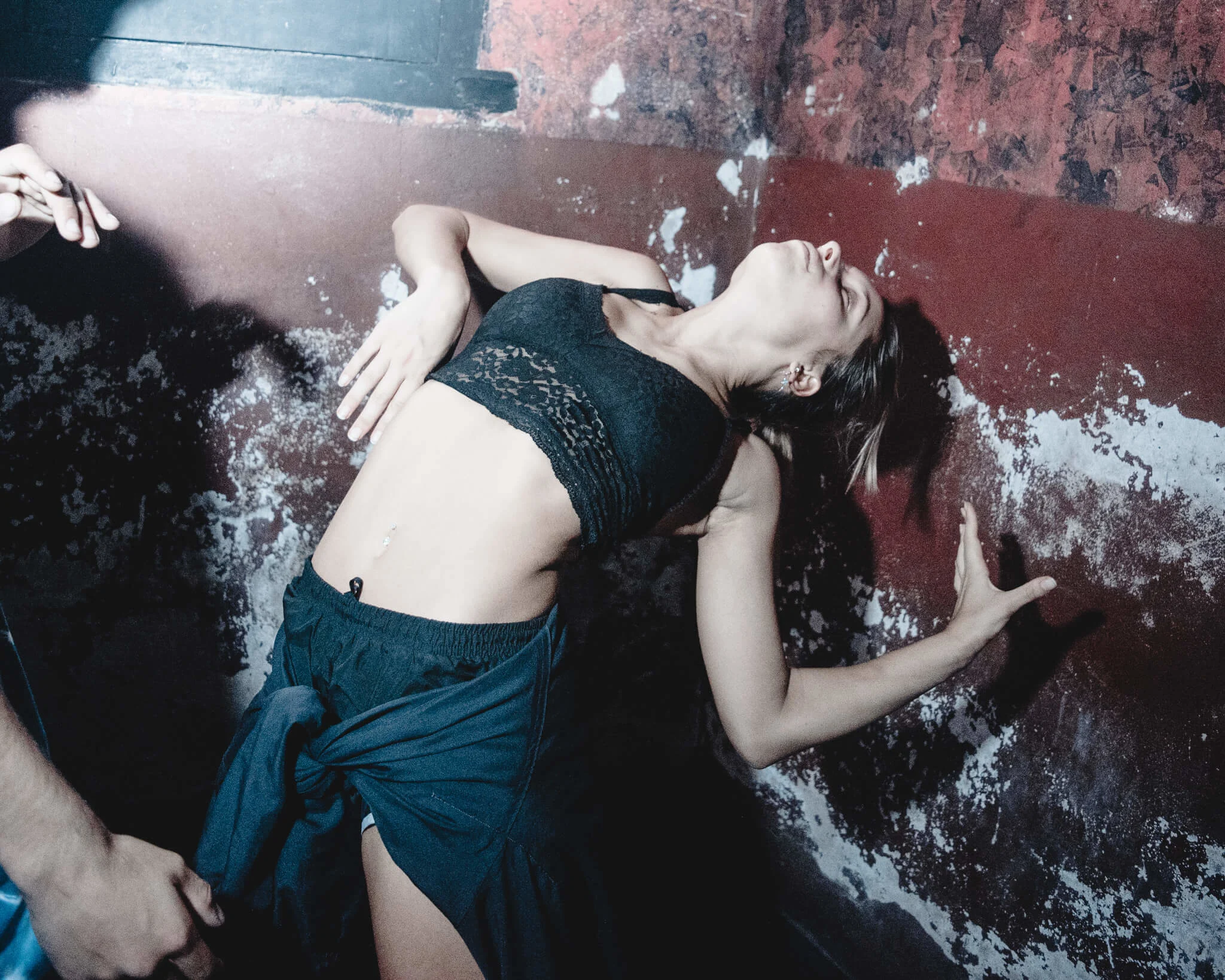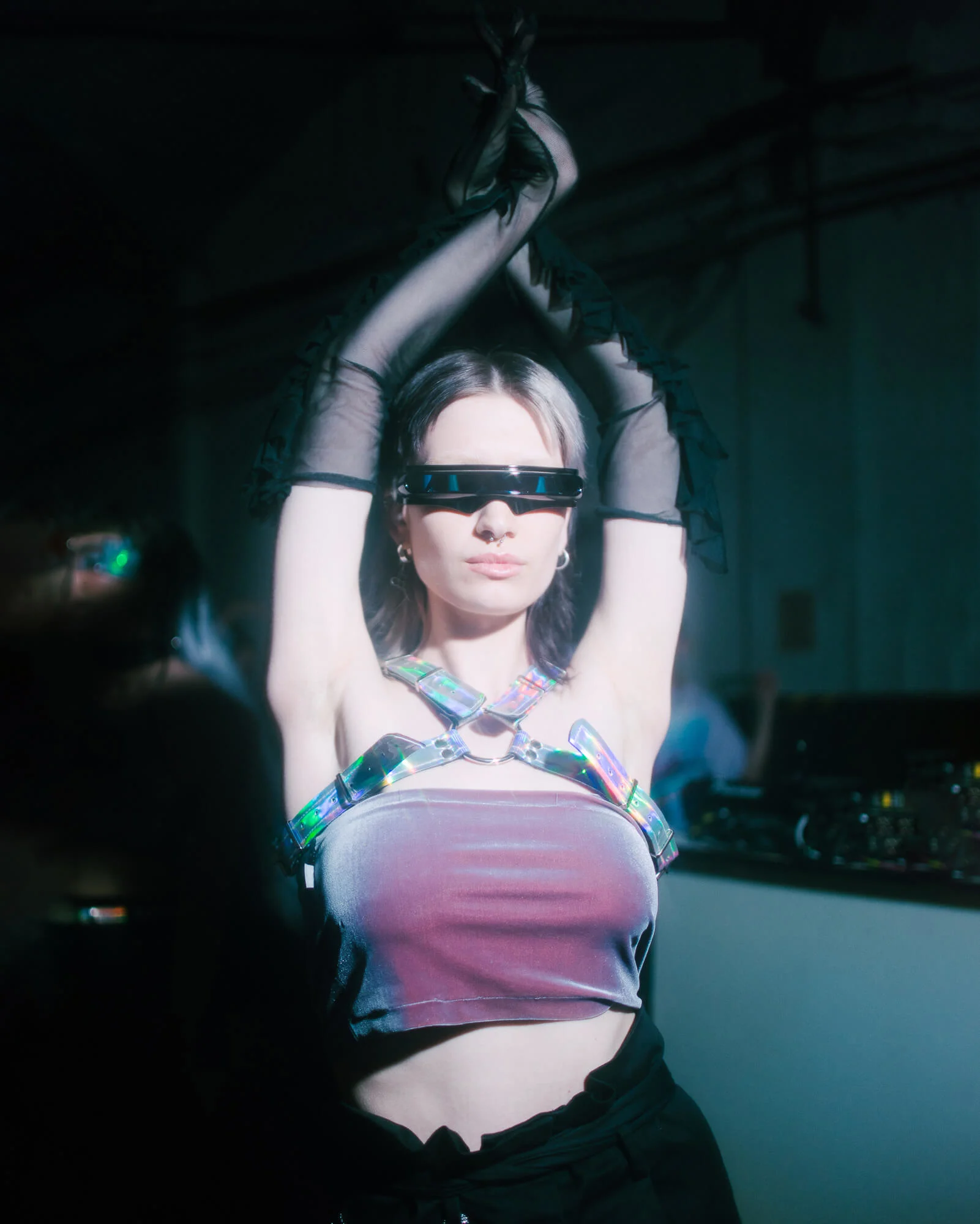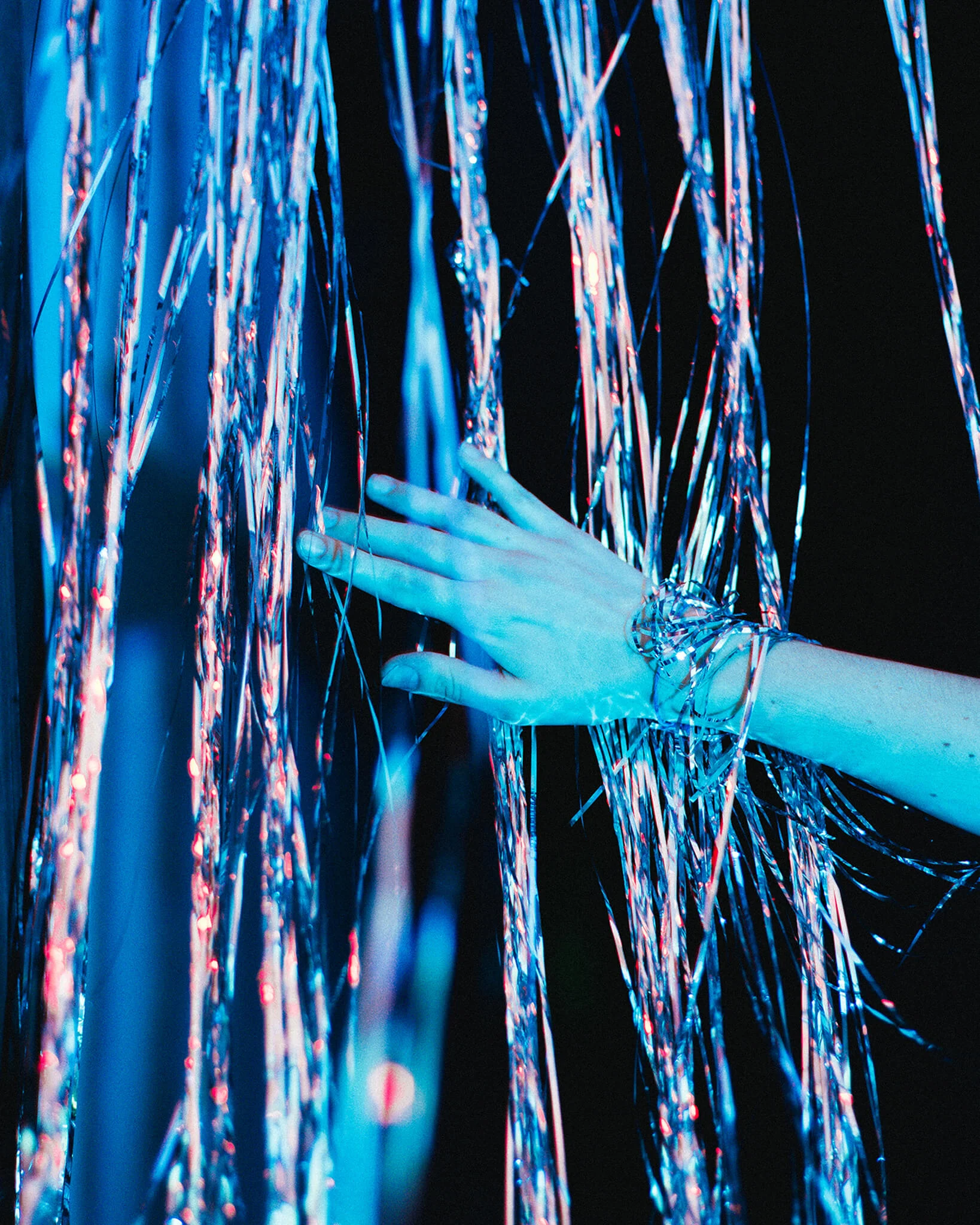

In “Limbo,” photographer Luciana Demichelis visits parties in student towns around Buenos Aires, painting dance floors in a heavenly light. Some images are fictional, created remotely while the country was in a strict lockdown during the pandemic, and there’s an ambiguity to each shot, the fictionalized and the real coming together to paint a picture of dance and freedom. They tell writer Anastasiia Fedorova how the photos explore the dance floor’s transformative power, and the political significance of raves for Argentina's new generation.
Every dance floor in the world is the same – and every dance floor is uniquely different. The rave experience is universal, with bass, beat and melody penetrating walls and bodies, and sweat, light and youth reverberating through the crowd. Argentinian photographer Luciana Demichelis captures that eternal character of the rave space—while also exploring it as a place for societal and generational change, and the role of photography in that process. “I started to take pictures in a purely poetic, creative way,” they admit, “and then I realised that the dance floor had a lot to say about how society looks at young people.”


For me, the dance floor is a place between life and death, because there we are in heaven.
Demichelis first started working on “Limbo” in 2018 between their native Ensenada and La Plata, a student town a short drive from Argentina's capital. Simultaneously ethereal and embodied, “Limbo” captures the tender fleeting moment in the life of the place and young people within it, while also pulling on nostalgic strings. It touches ghostly memories of ecstasy living in our bodies, whether from last weekend, or a decade ago.
“For me, the dance floor is some kind of limbo, a place between life and death, because there we are in heaven,” Demichelis says. “I’m interested in creating ‘heavenly’ images in that space, in reflecting the inner trance people experience.” Demichelis’s imagery often takes on that “heavenly,” ecstatic quality through light: a young raver in a fluorescent harness and narrow sunglasses illuminated with moon-like glow, a fountain of sparkles in the night, a moment when time stopped on the dance floor, the crowd frozen like ghostly lilac shadows. There’s a sense of transparency as if we were looking at a rave happening in a snow globe—a dreamy ethereal effect achieved through remote flash and post-production, completely different to the usual nightlife image.

Raised in the small town of Ensenada, Demichelis got into photography at the age of 15 and started photographing parties (birthdays, concerts and all kinds of gatherings) in their hometown as a way of earning an income, but soon realised it could be a gateway into creating a more nuanced form of visual storytelling. The idea of “Limbo” first emerged during a workshop with Cristina de Middel, now the president of Magnum and the author of the acknowledged book “The Afronauts” which blends documentary and fiction, which took place at Valparaíso Photography Festival.
In Demichelis’ mind, the idea of “Limbo” crystallized not as a mere documentation of the Argentinian rave movement, but the ultimate exploration of a mental and physical space in flux. “I’ve never thought that I was creating something in a documentary style—I am creating something personal and imaginative,” Demichelis says.


Limbo is composed both of images taken on the dance floors and staged shots which came to life in deserted spaces. A year into Demichelis’ work on the project, the country was put under strict lockdown during Covid-19 pandemic. A number of images in the series were taken at times when parties were not happening—fictionalized visuals to complete and enhance the story.
“I really like this ambiguity where you see a picture and you don’t know whether it was staged. It’s the in-between space, an enigma,” the photographer explains. This ambiguity is central to their practice and their understanding of the future of the medium. “Photography has that particularity and I think we should use it. Fiction can go to places documentary can’t. I think what you want to tell with the project is far more important. The moment I realised that I could do anything within photography, I fell in love with this perspective.”
Parties have become a space where people question and explore their identity.

Despite focusing on experimental storytelling, Demichelis’s project is still rooted in exploring what the rave space means for the young generation in Argentina. “This dance floor is pretty similar to other dance floors in the world but because we are here—in Latin America, in Argentina—the dance floor reflects this place,” they add.
Demichelis captures a generation which wants to party safely, while turning to the dancefloor to explore who they are on an individual, emotional and social level. With photography and art still not widely accessible for the young generation because of economic reasons, they see “Limbo” as filling a gap in global representation and part of the quest for the essence of what they describe as “Latin American imaginary”.


“For a very long time in Argentina the parties were an apolitical place where people just wanted to dance, but in recent years it’s really shifted. With the economic crisis, parties have become a space where people question and explore their identity. People started to create new ways to see themselves, and I was one of them. I identify as non-binary, and I started thinking about the possibility of being in the middle, being neither a man nor a woman. The dance floor is a chance to question who we are, a chance to question who we were in recent history”.

